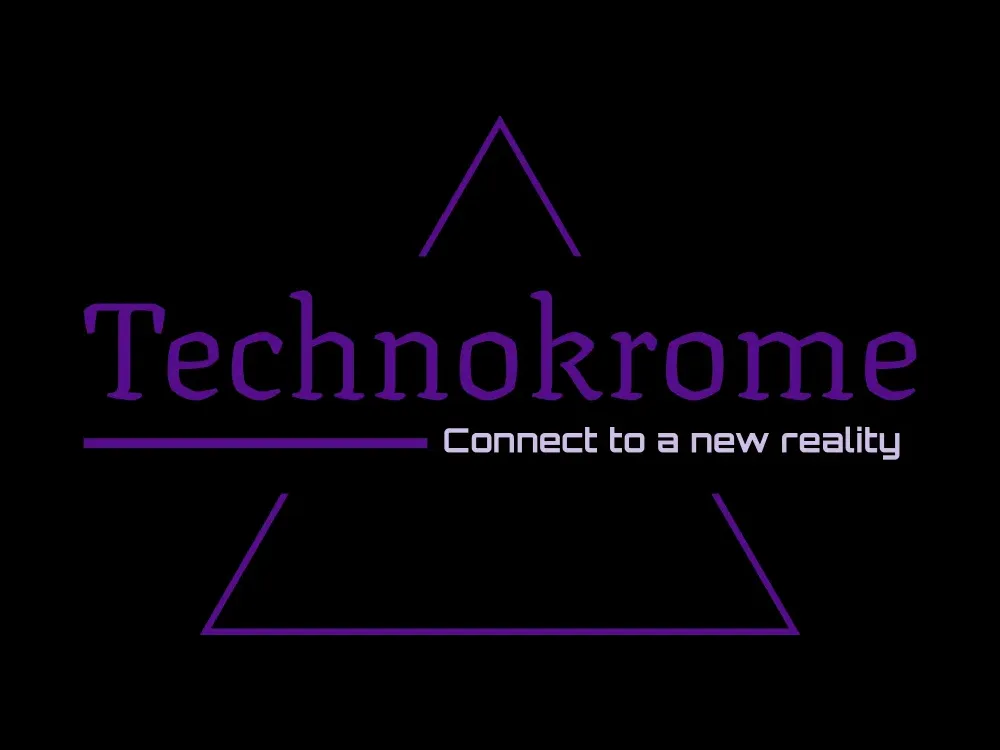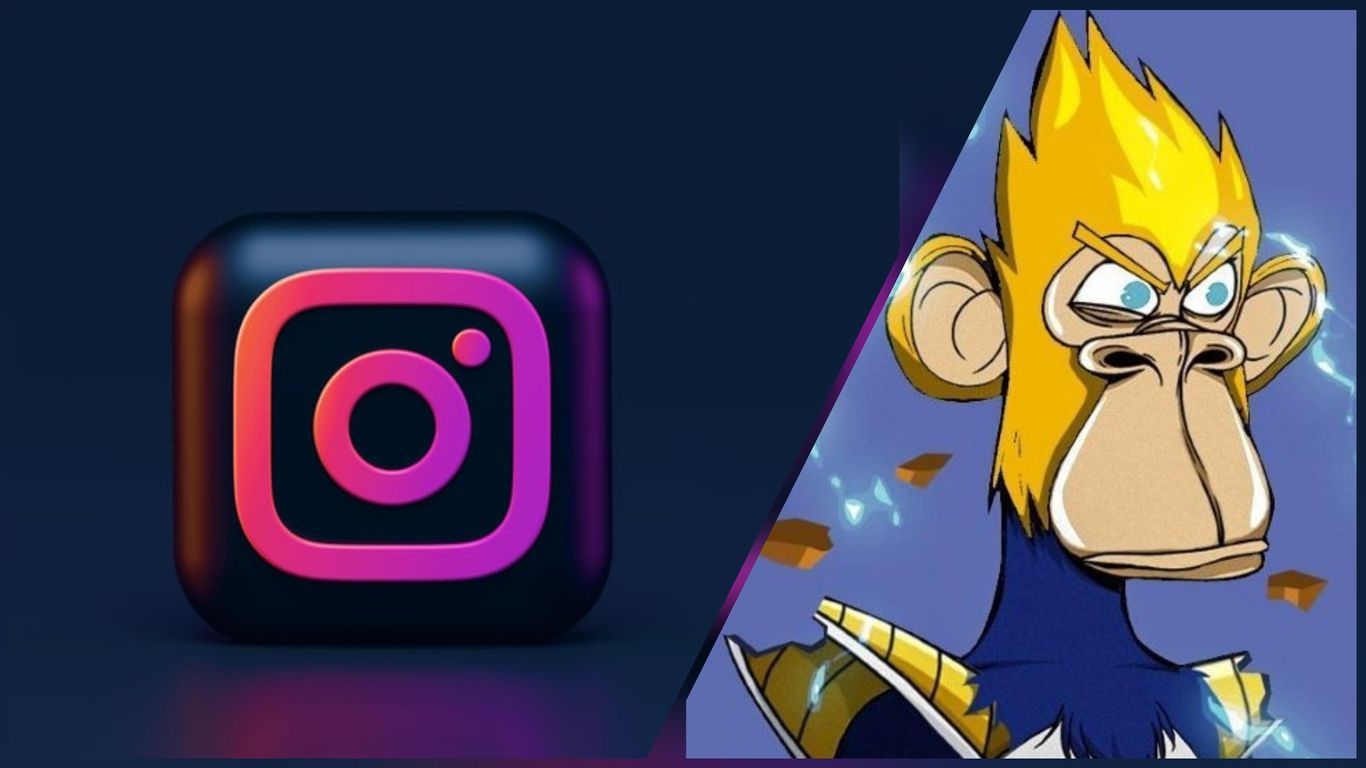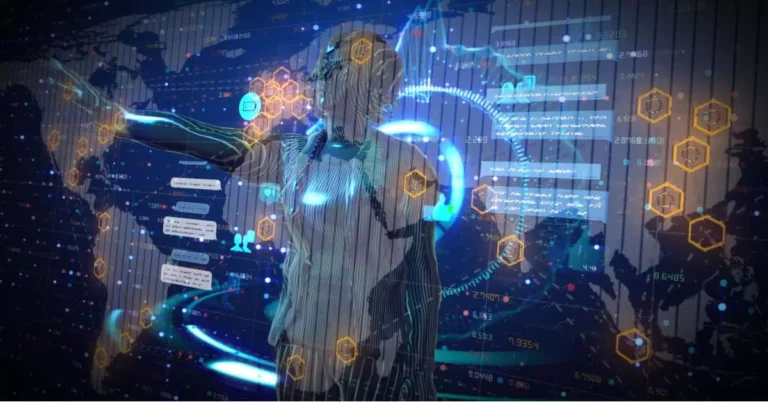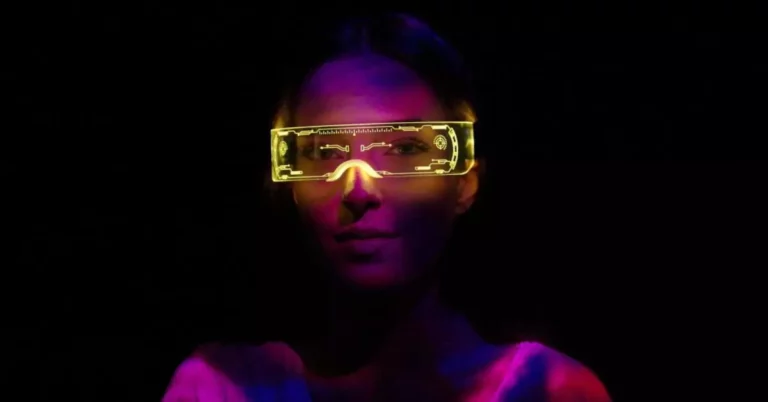Instagram will soon allow NFT creators and collectors to show off their digital art on the popular social media platform.
Starting this week, certain verified NFT holders will be able to display their collectibles on Instagram, said Meta CEO, Mark Zuckerberg. He also said Facebook will follow suit in Instagram’s footsteps later with respect to flaunting NFTs on user profiles.
The feature will temporarily be available to select creators in the United States for testing purposes across the platform. But eventual rollout to mainstream users is imminent.
Table of Contents
What exactly are NFTs?
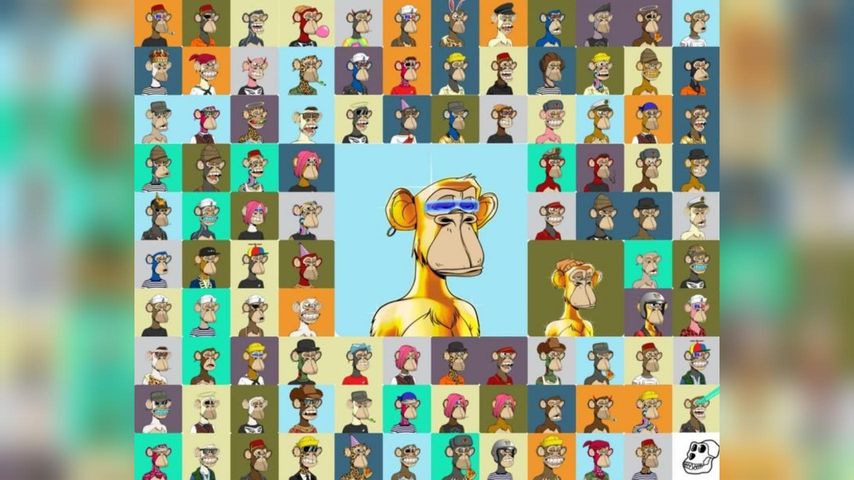
NFTs or non-fungible tokens are digital assets that represent real-time objects like pieces of unique artwork, in-game items, digital wearables, or even real estate. These objects basically exist in digital form as a unit of data that is stored on a decentralized blockchain. And to verify one’s proof of ownership over that particular digital asset, transactions between creators and holders are made via smart contracts that transfer ownership of the collectibles.
These smart contracts, if accurately filled, execute code in the blockchain that validates owner information and records it in the decentralized ledger. This allows the new owners to obtain a private key that can easily verify proof of ownership of the original NFT or digital collectible, while the creator of the token holds a public key that serves as the certificate of authenticity for said assets.
How can users display NFTs on Instagram?
Users will have to link their crypto wallets to their Instagram accounts. Supported wallets include MetaMask, TrustWallet, and Rainbow. Others such as Coinbase Wallet, Phantom, and Dapper Wallet will have support on the platform soon.
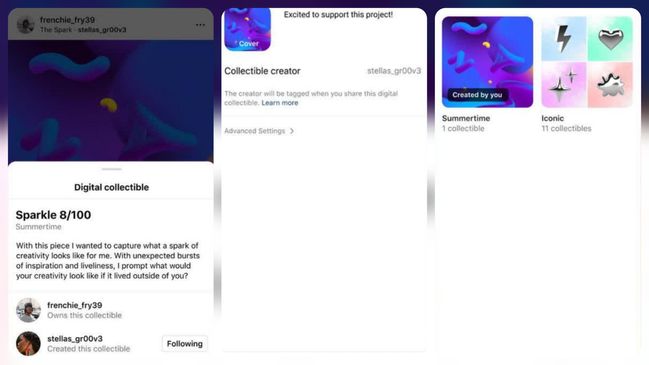
Are there any requirements for displaying NFTs on Instagram?
The only requirement we know as of now is that the NFTs minted on Ethereum and Polygon are the only ones supported as of now. Support for Solana and Flow blockchains will be added later.
Ethereum, the blockchain-based software platform that allows for the open trade of cryptocurrencies, also supports NFT transactions with its smart contract functionality. Polygon, a sidechain scaling solution for Ethereum, offers high-speed transactions with low gas fees. These allow for the minting of NFTs on the blockchain and provide secure transactional operations for the users.
When will the average Instagram user be able to show off their NFT collection?
Zuckerberg has spoken about how the platform will gradually rollout NFT support for mainstream users but this week, they will begin testing the feature with specific creators and collectors in the United States.
With over a billion monthly active users for the photo-sharing platform, it will be difficult to track usage and related bugs for this feature if access is available to all general users. The cyber risks associated with users connecting their MetaMask and Rainbow wallets will also become easier to trace and debug if tested with only a subset of users first.
This supposed ‘beta’ version will allow Meta to identify bugs and engineer solutions for underlying defects that impact creators and other distinct users in order to fix any transactional errors or technical loopholes in the platform that could lead to critical crypto breaches.
Will Instagram be adding any special extensions to the NFT feature?
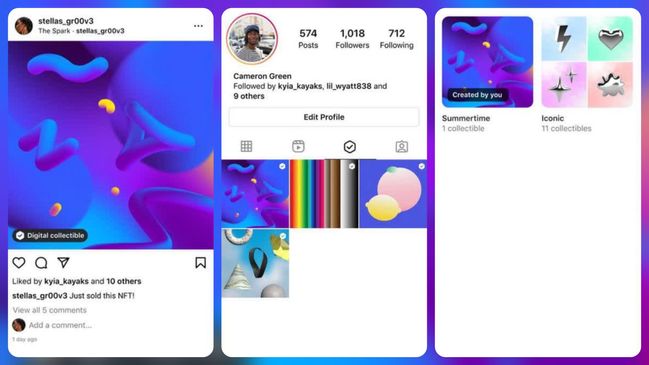
Apart from users being able to share their tokens across the platform, the NFTs can apparently also be used as augmented reality (AR) stickers for sharing through Insta Stories.
Instagram will also be having a distinct “shimmer” effect for the shared NFTs to visually set them apart from other image or video posts made by the user. The displayed tokens will also have both creators and collectors credited in them – by getting their crypto wallets plugged in.
As opposed to Twitter’s hexagonal NFT displays, there will be no fees associated with using this feature on Instagram as of now. However, there exist certain pre-requisites for users to be able to display the digital collectibles on Instagram. You can read more on this here.
Why has the NFT feature been brought to Instagram?

Zuckerberg had previously made an announcement at the SXSW Conference held in March. He said had intended to bring NFTs to the social networking platform despite there being some work left to do before that can happen.
As we all know, he visualizes a future where users can live life digitally. And that, of course, applies to the whole suite of Meta apps. This vision of his aligns with the Facebook founder’s ambitions for the future of the Metaverse and Zuckerberg’s belief that virtual reality is the future. With all the research they have dedicated to Extended Reality at Meta’s Reality Labs – it is evident that not only does Mark want the entirety of Meta users to shift their lives to a new virtual world but he also wants to give them the ability to create and build a thriving economy to survive in it.
And it is only fitting for a virtual world to have an economy free from governmental policies and regulations and something that is made truly by the people and for the people. And the answer to virtual fiscal problems can only be given by decentralization and blockchain-based apps.
The blockchain is a technology that ensures transparency in monetary transactions and makes sure the involved parties share mutually agreed-upon information. Blockchain technology allows for the use of Decentralized Finance (DeFi) in order to eliminate intermediaries between people and merchants/businesses while conducting financial transactions.
Meta has been working with creators like Jen Stark and Gary Vaynerchuk for this platform upgrade. But this feature is not something new, at least where Twitter is concerned. Back in January, Twitter released an update for select users who have subscribed to its premium Twitter Blue service that enabled them to display Ethereum NFTs as their display pictures on the social platform. This move was accepted by many enthusiastic crypto holders while some pessimistic users denounced the upgrade citing negative environmental impact and amplifying access to cryptocurrency scammers. Previously Youtube CEO, Susan Wojcicki, has also spoken about how Youtube will later adopt the verification and sharing of crypto assets through the video platform to help creator economy flourish even further.
As I said previously, this move is surely a part of a bigger scheme to induce greater participation in Zuckerberg’s dream project, the Metaverse. And part of the initiative obviously includes interoperability among virtual platforms and decentralized applications.

People will be given the ability to make use of Meta-manufactured AR and VR hardware to project photorealistic avatars onto 3D spaces for the purpose of interacting with society and building a community – all from the comfort of one’s home. And to make this (virtual) reality a smooth experience for users, we would of course want more parts of our lives transferable and eventually, shareable.
Information security vulnerabilities will be exposed in epic proportions but hey, isn’t that what Facebook/Meta is known for? Besides, for the sake of the future of the Internet, that is Web3 – users may have to yield to companies’ unreasonable expectations and abuse of authority regarding data protection.
It is an entirely different story that Zuckerberg may want to self-crown himself as the supposed god of this virtual world by having billions of users’ data solely in his hands. This data would then include details of user-conducted crypto transactions and the sheer number of cameras tracking their every movement (yes, literally) – besides personally identifiable information that Facebook/Meta already has now.
What does this feature mean for creators?
Adam Mosseri, head of Instagram, took to Twitter to further elaborate on what this move means. “I want to acknowledge upfront that NFTs and blockchain technologies are all about distributing trust and distributing power,” he said. “But Instagram is fundamentally a centralized platform, so there’s a tension there. So, one of the reasons why we’re starting small is we want to make sure that we can learn from the community. We want to make sure that we work out how to embrace those tenets of distributed trust and distributed power, despite the fact that we are, yes, a centralized platform. We do think that one of the unique opportunities we have is to make web3 technology accessible to a much broader range of people. And NFTs specifically we think will be interesting not only to creators who create NFT art but also to people who want to collect it.”
As Instagram serves as a major source of livelihood for creators and influencers, the platform’s established digital economy becomes all the more important. While creators have access to many platforms to get their work across to larger audiences, they usually provide variable amounts of recognition and reach – making things difficult for artists to cope with an ever-changing digital environment in order to finance themselves.
This new NFT feature will help strengthen creator economies to thrive and grow, with the support of a billion Instagram users.
What could this change mean for users?

Users who are creators of NFTs will definitely benefit from this upgrade as this will make use of Instagram’s vast userbase as a substantially huge audience for users to put their work forth. This will help them to sell better and will let creators navigate through users’ perceptions for future projects.
This change could also mean more competition for collectors and could eventually turn out to be a key ETH value indicator for NFT collections. Also, one of the main purposes for collecting art is to essentially show off. As billions of eyeballs scroll through Insta and other social media feeds for hours every day – this could be the perfect opportunity for collectors to boast their unique digital art to a humongous audience.
And of course, sooner or later, the general user will also be motivated to participate more in the crypto and NFT space to follow the trend. All part of Zuckerberg’s master plan to get even more people partaking in the awakening of the Metaverse, methinks?
How the usage of NFTs on Instagram can change users’ feeds

The collectible tokens can be used for displaying on Instagram’s general feed for a collector’s followers or can be shared through Instagram Stories and DMs. This makes it easier for creators and holders alike to effortlessly share their acquisitions with the world and possibly even make a dent in the share price of said NFT.
But how will this impact users’ news feeds? We cannot say for sure until the feature actually launches for the mainstream userbase but we are hoping for it not to disrupt the existing viewing hierarchy of posts from those we follow.
There have been massive changes lately in how the Instagram newsfeed displays posts – especially with intermittent ads, promoted posts, and posts that are relevant to ones we liked before. As if the Explore feed wasn’t enough for like-relevant posts, now it’s also creeping into our newsfeed.
Although it does help shed some light and give a popularity boost for newer creators, and ultimately allow users to find more creators they might like and follow – but somehow the execution of it all does seem a bit invasive. Or it could just be me.
Anyway, the last thing people would want is multiple bored apes and pixelated punks swarming their general feed. It would make no sense as that would not be something users would like to be bombarded with every time they open the app. And since Instagram’s like button is hit around 4.2 billion times a day, according to a digital report, imagine the astronomical number of users who frequent the platform per day. You get it, it would get annoying fast. Here’s hoping Mark does not decide to prioritize the display of NFTs on news feeds by changing the AI to detect the tokens and push them to the top of the feed.
How will this change the functioning of social media?
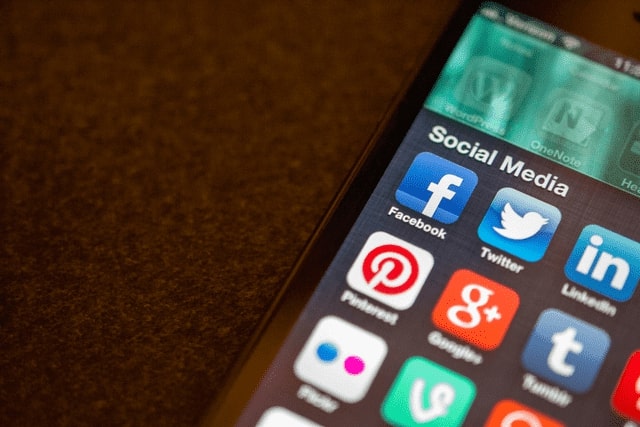
Instagram is one of, if not the biggest social media platforms on the planet. It is expected that other social media apps will soon follow through with similar upgrades that allow users to display NFTs as their profile pictures or otherwise.
Social media users will eventually start trends that more or less, involve showing off their unique artwork, rouse debates on cryptocurrency, and encourage millions of followers to do the same. With the spotlight on crypto properties, there could be both motivating and intimidating consequences impacting the functioning of existing cryptocurrency operations.
Besides the aforementioned security risks that will obviously be amplified by the move being adopted by giant digital platforms, this will also bridge the existing gap between the average smartphone user and the decentralized world of cryptocurrency. With enhanced access to non-fungible tokens via web apps that already have so much control over people’s lives – the likelihood of general users putting their fingers into the crypto pie will significantly increase.
Thus, leading to an overall increase in crypto market engagement and greater fluctuations in market sentiment. You get the drill. Cryptocurrency will soon no longer be reserved for only the tech-savvy and wealthier sects of society. With the average population jumping in, decentralized applications and blockchain-based economies will soon become normalized as part of everyday life. Only time will tell whether that’s a good or bad thing.
Instagram’s NFT move could risk security breaches

Apart from the usual fraudulent schemes and digital swindling that already exist within NFT marketplaces, having these collectible tokens displayed on a social platform with such colossal global reach – could open up a new world of troubles.
This could include vulnerabilities in the blockchain being preyed upon by an even larger number of fraudsters across the world. With NFTs that can be easily shared among users through DMs, it becomes even easier for scam artists online to reach out to an NFT collector and offer phony services like NFT support and rectifying contract details of said tokens.
This would enable scammers to connect the token holders’ wallets to fake servers and sync their own MetaMasks to the victims’ wallets – thus allowing them to freely transfer crypto funds and unique artwork to themselves. Unsuspecting victims who do not hold the knowledge regarding combating fraud attempts – will often fall prey to such scams now that their precious tokens will have an even larger number of obtrusive eyeballs scanning their crypto acquisitions.
Phishing attempts could involve sending holders automated DMs that say something along the lines of them having incomplete smart contracts or requiring other contract details. They could even be sent unsolicited messages with suspicious links that may grant access to users’ wallet.dat files or MetaMask extensions, for the hacker to smoothly extract any critical personal information.
Malicious links to fake NFT giveaways, funneling users’ unique artwork and illegally presenting as their own original pieces of work (basically identity fraud), and sending malware through users’ phones are only a few of the boatload of sinister ideas that experienced hackers and fraudsters could use to track NFT collectors and creators. The Bored Ape Yacht Club (BAYC) NFT collection already had about $2.8 million worth of NFTs stolen through their hacked Instagram account even as this feature is yet to be launched on the platform.
Sounds like Zuckerberg will need to get a better grip on tackling these security vulnerabilities before he can expect this feature to smoothly take off. But it also rests upon the users themselves to remain careful and vigilant of creeping hackers who would not miss any opportunity to gobble up millions of dollars in the blink of an eye.
Do people even need NFTs on Instagram?

Did people ever really need anything, apart from electricity? Sorry for the dumb joke but people do enjoy extending their comfortable lifestyles into ones that eventually provide even more comfort. And honestly, with the existence of the unsurpassed human brain – why not?
Yes, maybe people do not actually need yet another platform gasconading their belongings. But do they want to? Of course they do, which is why the world’s richest businessmen have always found a way to tap into people’s greed and narcissistic desires for their own benefit. Because try as you might, one thing that people will never fall short of is their insatiable desire to have and to hold.
So the question of needing an NFT upgrade on Instagram does not even arise. Because the users will want it regardless. And Zuckerberg aims to please, except for maybe privacy concerns – so there you go.
It is yet to be determined if unrestricted access to blockchain-based upgrades on a social media platform will breed irrevocable challenges for society to face. But hey, what are we known for, if not spawning more complications for humankind since the beginning of time?
